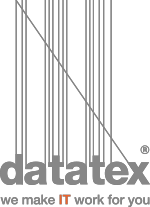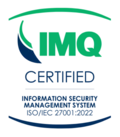What are Textiles: Definition, types and characteristics
You got up this morning, pulled yourself out of the comfortable bedsheet, drew the curtains, stretched out on the carpet, put on slippers, dried off your face with a soft towel, then you put on one of your favorite outfits and sat in the comfortable seat of your car.
If someone were to ask you what all these actions have in common, would you think the answer is –textiles?
No? Well, think again.
Join us in our textile exploration journey, where we delve into the intricate world of fabrics, fibers, and threads that weave through our lives, tracing their origins from ancient times to modern innovations. You will be given the answer about what is textile, through the story woven with threads of tradition, innovation, and cultural background.
We will discover textile definition, types of textile and fiber, their classification and characteristics.
Textile (R)Evolution
Let’s start with the very name of the word, its origin, and evolution, from ancient times across various meridians to the present day.
The word ‘textile’ comes from the Latin adjective textilis, meaning ‘woven’, which itself stems from textus, the past participle of the verb texere, ‘to weave’. Originally applied to woven fabrics, the term “textiles” is now used to encompass a diverse range of materials, including fibers, yarns and fabrics, as well as other related items (Wiki, https://en.wikipedia.org/wiki/Textile).
We could say that the definition of the word itself reflects the intricate nature of fabrics woven together. From the earliest civilizations to the present day, textiles have played a pivotal role in human society, serving a range of different purposes in clothing, furnishings, and industrial materials.
From the earliest civilizations and first fabrics made in China, Egypt and Persia, across the Middle Age and Turkish, Indian and Arab artisans, going through the hands of Italian artists to evolve in the Textile Industry in France and Germany and Textile Revolution in England, and land finally on the costs of the New World, touching almost every corner of the Earth… Textiles have indeed undergone a fantastic journey of a true Textile (r)evolution.
This journey still continues, this time in modern facilities, utilizing scientific methods and cutting-edge apparel software and applications, becoming a true work of art.
Textile Fibers: The heart of Textile Manufacturing
At the heart of the textile industry lies the transformation of fibers into fabrics, a process that has evolved over centuries. Each textile is made of fibers that have been turned into threads or cords and either woven or knitted together.
Fiber is the smallest component of fabrics with a fine, thin, hair-like appearance. They can be natural, synthetic or both.
Textile: types, materials and characteristics
Below we are bringing you some of the primary types of textile fibers based on the fiber origin, each with its own set of characteristics and applications.
Natural Fibers
As the word itself explains, natural fibers derive from renewable resources found in nature: plants, animals, or minerals, and are minimally processed before being spun into yarn or thread for use in textiles.
- Cotton: Known for its softness, breathability, and absorbency, cotton is one of the most widely used natural fibers.
- Linen: Made from the fibers of the flax plant, linen is valued for its strength, durability, and natural luster.
- Jute: Jute fibers are derived from the jute plant and are commonly used to make burlap sacks, rope, and coarse textiles.
- Wool: Wool is obtained from sheep and other animals like goats (cashmere and mohair) and rabbits (angora). It’s prized for its warmth, insulation properties, and softness.
- Silk: Silk is produced by silkworms and is renowned for its luxurious feel, natural sheen, and strength.
- Asbestos: While not commonly used today due to health concerns, asbestos was historically used in textiles for its fire-resistant properties.
Synthetic Fibers
Unlike natural fibers, synthetic fibers are man-made materials produced through chemical processes, offering durability, versatility, and often specific performance characteristics.
- Polyester: Polyester is a synthetic fiber known for its durability, wrinkle resistance, and ability to retain shape and color.
- Nylon: Nylon is a strong, elastic synthetic fiber used in various applications, including clothing, activewear, and industrial materials.
- Acrylic: Acrylic is a synthetic fiber that mimics the properties of wool, offering warmth and softness.
- Polypropylene: Polypropylene is a lightweight, moisture-wicking synthetic fiber commonly used in activewear and outdoor gear.
- Rayon: Rayon is a semi-synthetic fiber made from cellulose fibers, offering a silk-like feel and drape.
- Lycra or Spandex: Spandex is a highly elastic synthetic fiber used in stretch fabrics and clothing like athletic wear and swimwear.
Blended Fabrics
This type of fibers are made by combining two or more different types of fibers, offering a combination of their individual properties.
- Poly-cotton: A blend of polyester and cotton, poly-cotton fabrics combine the best qualities of both fibers. They offer the comfort of cotton with the durability and wrinkle resistance of polyester, making them popular choices for everyday clothing.
- Wool-silk: Blending wool with silk results in a fabric that is both luxurious and warm. Wool-silk blends are commonly used in high-end suits, dresses, and scarves, offering a perfect balance of elegance and functionality.
- Rayon: Rayon is a versatile semi-synthetic fiber made from cellulose derived from wood pulp. It’s often blended with other fibers such as cotton or polyester to enhance its properties. Rayon blends are used in a wide range of applications, from clothing to upholstery.
Specialty Fabrics
Specialty fabrics are textiles that are specifically designed or engineered to possess unique properties or characteristics for particular applications, in order to provide features such as enhanced durability, water of flame resistance.
- Denim: Denim is a sturdy cotton twill fabric known for its durability and rugged appearance. It’s primarily used in jeans, jackets, and casual wear, but it’s also finding its way into more fashionable and upscale garments.
- Velvet: Velvet is a luxurious woven fabric characterized by its soft pile and rich texture. It’s commonly used in eveningwear, upholstery, and decorative accessories, adding a touch of elegance and sophistication.
- Gore-Tex: Gore-Tex is a waterproof and breathable fabric membrane used in outdoor apparel and equipment. It’s highly durable and weather-resistant, making it ideal for outdoor activities in harsh conditions.
- Flame-resistant fabrics are textiles specifically engineered to resist ignition, combustion, and propagation of flames.
Textiles in Everyday Life
Textiles are the inevitable part of our everyday lives, surrounding us in various forms and serving diverse purposes. From the clothes we wear to the upholstery in our homes, textiles play a crucial role in our comfort, style, and even safety.
By understanding the different types of textiles available, we can make informed choices that suit our needs, preferences, and lifestyles.
So, the next time you slip into your favorite outfit or under your soft blanket, take a moment to appreciate the incredible diversity and craftsmanship of textiles.
How Datatex ERP NOW Can Optimize Textile Manufacturing
To truly harness the potential of textiles, manufacturers need efficient tools to manage production, resources, and workflows. Datatex ERP apparel software empowers textile manufacturers to streamline operations, enhance productivity, and adapt to evolving market demands. From natural fibers to specialty fabrics, ERP NOW integrates seamlessly across every stage of textile production, ensuring sustainable growth and operational excellence. Explore how Datatex ERP NOW can revolutionize your textile manufacturing processes.





